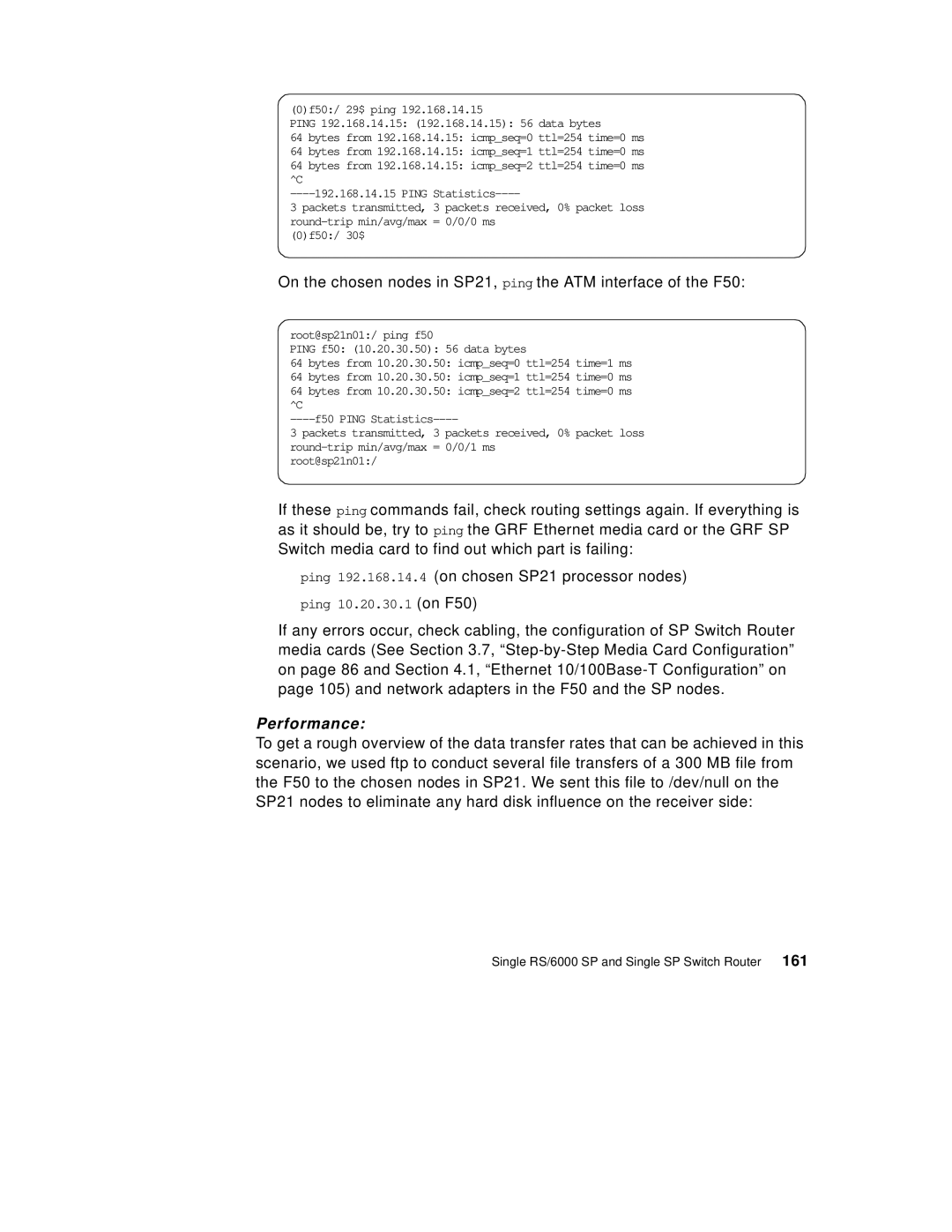
(0)f50:/ 29$ ping 192.168.14.15
PING 192.168.14.15: (192.168.14.15): 56 data bytes
64 bytes from 192.168.14.15: icmp_seq=0 ttl=254 time=0 ms
64 bytes from 192.168.14.15: icmp_seq=1 ttl=254 time=0 ms
64 bytes from 192.168.14.15: icmp_seq=2 ttl=254 time=0 ms ^C
3 packets transmitted, 3 packets received, 0% packet loss
(0)f50:/ 30$
On the chosen nodes in SP21, ping the ATM interface of the F50:
root@sp21n01:/ ping f50
PING f50: (10.20.30.50): 56 data bytes
64 bytes from 10.20.30.50: icmp_seq=0 ttl=254 time=1 ms
64 bytes from 10.20.30.50: icmp_seq=1 ttl=254 time=0 ms
64 bytes from 10.20.30.50: icmp_seq=2 ttl=254 time=0 ms ^C
3 packets transmitted, 3 packets received, 0% packet loss
root@sp21n01:/
If these ping commands fail, check routing settings again. If everything is as it should be, try to ping the GRF Ethernet media card or the GRF SP Switch media card to find out which part is failing:
ping 192.168.14.4 (on chosen SP21 processor nodes)
ping 10.20.30.1 (on F50)
If any errors occur, check cabling, the configuration of SP Switch Router media cards (See Section 3.7,
Performance:
To get a rough overview of the data transfer rates that can be achieved in this scenario, we used ftp to conduct several file transfers of a 300 MB file from the F50 to the chosen nodes in SP21. We sent this file to /dev/null on the SP21 nodes to eliminate any hard disk influence on the receiver side:
Single RS/6000 SP and Single SP Switch Router 161
